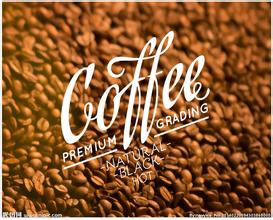How to describe the taste and flavor of Yejia snow caffeine; introduction to the production area of grinding scale varieties
How to describe the taste and flavor of Yejia snow caffeine; introduction to the production area of grinding scale varieties
After cooling, whether or not to highlight the popularity of sweet potato Yega is largely influenced by the trend of boutique coffee since the millennium. Its floral and fruity, citrus flavor sets a typical rebellious flavor. Under the popularity of Italian re-baking, there has never been a sour taste in the definition of coffee, let alone citrus or fruit. Today, it and coffee such as Manning have become the entry-level varieties of tasting coffee, the representative of floral fruit coffee, and even the representative of African coffee. At the same time, under Yega's bedding, Kenya's coffee was full of berries, apples and sour fruit, and the summer, which later dominated the boutique coffee industry, made a more amazing appearance.
In 1959, the Yega snow coffee producing area began to try the water washing method. After 1970, the jasmine fragrance of Yega was washed, and the lemon and citrus flavor was popular in Europe and America. It became a model of fine beans in Africa, and the sun treatment was gradually drifting away from Shifei.
Acidity (Acidity/Acidy): one of the most important items in coffee tasting, and usually the most misunderstood word. The acidity of coffee is not the acidity or sour smell of acidity and alkalinity, but describes a lively, bright flavor, which is somewhat similar to the dryness of wine tasting. The lack of acidity of coffee beans is tantamount to being lifeless and tastes empty and boring. Acidity has many different characteristics, which are the main basis for distinguishing coffee beans from different places, such as those from Yemen and those from East Africa (such as Kenya and Zimbabwe). Its acidity is characterized by an impressive fruity aroma and a red wine-like texture. The deeper a coffee bean is roasted, its acidity decreases, but if a coffee bean with high acidity is roasted deeply, it will show more sharpness and irritation.
Body/Mouthfeel: stickiness refers to the weight of coffee soup to the mouth, while taste refers to the texture of coffee soup to the mouth, like the following words: yellow cream, sand, grease, smooth, thin, watery, non-greasy, or astringent. Stickiness is actually a feeling, and although it is related to the amount of solid particles dissolved in water, it is more difficult to distinguish the degree by "quantitative" method.
When a coffee bean is roasted to a medium brown or dark brown baking point, the stickiness in the cup will be increased, and the taste will be more round and fatter. But if the coffee beans are roasted to a deeper level, such as Spanish roasting or French deep roasting, the consistency will be reduced and the taste will become fat-free and sand-like.
Wet aroma (Aroma): although the word may seem easy to understand, when it comes to the performance of wet aroma, you have to discuss it with the depth of baking. At very shallow baking depth, the wet aroma is completely undeveloped, while under moderate to moderate baking, the performance of wet aroma reaches the peak, but under very deep baking, the wet aroma becomes simple and weakened. For professional coffee tasters or cup testers, the difference in the wet aroma of coffee is sometimes more obvious and easier to distinguish than the taste tasted in the mouth. A sentence that describes the taste of coffee.

Important Notice :
前街咖啡 FrontStreet Coffee has moved to new addredd:
FrontStreet Coffee Address: 315,Donghua East Road,GuangZhou
Tel:020 38364473
- Prev

Introduction of Sidamo Lion King Coffee Flavor description Grinding scale in Ethiopia
Ethiopian Sidamo Lion King Coffee Flavor description Grinding scale Variety introduction before 1974, coffee production, processing and trade rights were in private hands. During the military administration, private farms were nationalized and smallholder coffee producers were snubbed. In 1991, the Ethiopian Transitional Government issued a new economic policy to encourage private businessmen to export coffee. As a result, private
- Next

Flavor description of Cupid Coffee beans in Pokuit producing area of Panama introduction to the planting environment of varieties and producing areas
Description of the flavor of Cupid coffee beans in Pokuit, Panama, unlike some other high-priced coffee (such as cat shit, Blue Mountain), the coffee quality of this estate has really reached its price level. although high demand and market factors have also played a certain role. This record-breaking coffee tastes unusual: bright and very
Related
- Detailed explanation of Jadeite planting Land in Panamanian Jadeite Manor introduction to the grading system of Jadeite competitive bidding, Red bid, Green bid and Rose Summer
- Story of Coffee planting in Brenka region of Costa Rica Stonehenge Manor anaerobic heavy honey treatment of flavor mouth
- What's on the barrel of Blue Mountain Coffee beans?
- Can American coffee also pull flowers? How to use hot American style to pull out a good-looking pattern?
- Can you make a cold extract with coffee beans? What is the right proportion for cold-extracted coffee formula?
- Indonesian PWN Gold Mandrine Coffee Origin Features Flavor How to Chong? Mandolin coffee is American.
- A brief introduction to the flavor characteristics of Brazilian yellow bourbon coffee beans
- What is the effect of different water quality on the flavor of cold-extracted coffee? What kind of water is best for brewing coffee?
- Why do you think of Rose Summer whenever you mention Panamanian coffee?
- Introduction to the characteristics of authentic blue mountain coffee bean producing areas? What is the CIB Coffee Authority in Jamaica?

